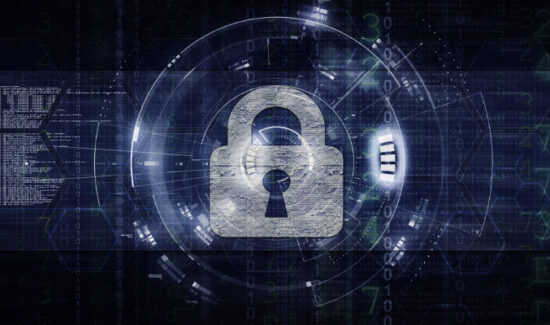Continuous Exposure Management: Simplicity in the Modern Digital Landscape


Solutions Review’s Contributed Content Series is a collection of contributed articles written by thought leaders in enterprise technology. Haggai Polak of Skybox Security looks to Continuous Exposure Management as the next evolution of cybersecurity.
Cybersecurity faces unprecedented challenges with the increasing complexity of the digital landscape and the growing sophistication of cyber-criminals. The persistence of vulnerability and threat trends has also contributed to this unsettling reality. According to one report, 25,096 new vulnerabilities were published in 2022, setting an all-time record for a single year and surpassing the previous year’s figure of 20,1962 new vulnerabilities.
Traditional security tools have proven inadequate in addressing evolving threats and vulnerabilities. However, despite these challenges, hope is on the horizon as new approaches emerge and promise significant enhancements.
Continuous Exposure Management: Simplicity in the Modern Digital Landscape
The Limitations of Traditional Tools and Approaches
The traditional approaches that were once dependable have now become labor-intensive, fragmented, reactive, and often inefficient. As a result, they struggle to effectively identify numerous security vulnerabilities and inundate security teams with false positives, impeding their ability to allocate resources efficiently and prioritize critical issues.
These outdated methods employed by cybersecurity teams continue to fall short of addressing the rapidly evolving and sophisticated threats organizations encounter. Therefore, it has become imperative for the industry to embrace innovative approaches and solutions that can adapt and respond swiftly to new challenges, especially as cyber-attacks continue to grow in both complexity and scale.
Embracing New Approaches
Amidst the growing complexity crisis, the cybersecurity industry is witnessing the emergence of innovative approaches that offer promising solutions. For example, a new approach called continuous exposure management offers improvements in performance, efficiency, and risk reduction.
Continuous exposure management, as defined by Gartner, encompasses a set of processes and capabilities that empower enterprises to continuously assess the accessibility, exposure, and exploitability of their digital and physical assets. This modern paradigm operates on a risk-based framework, leveling the playing field and enabling organizations to adopt a proactive and integrated approach to vulnerability and security policy management.
Organizations can shift from a reactive stance to a proactive one by adopting continuous exposure management. This new approach allows them to identify and address vulnerabilities in real-time, minimizing the likelihood of successful cyber-attacks. By continuously assessing the accessibility and exposure of assets, organizations can detect potential weaknesses and respond swiftly, reducing the window of opportunity for threat actors.
Furthermore, the cybersecurity landscape is experiencing the rise of various other innovative approaches that leverage advanced technologies such as machine learning, threat intelligence, behavior analytics, and automation. By integrating these technologies into their cybersecurity strategies, organizations can enhance the efficiency and effectiveness of their security measures, staying ahead of evolving threats and safeguarding their digital assets.
Optimizing Cybersecurity through Continuous Exposure Management
To fully leverage the benefits of continuous exposure management, organizations should consider the following steps:
- Take a holistic approach: Streamline cybersecurity functions by consolidating them and eliminating the disconnects and fatigue caused by multiple-point solutions. Utilize a unified platform to seamlessly manage vulnerabilities, compliance challenges, network risks, and policy configurations.
- Maintain 360-degree visibility: Gain a comprehensive understanding of the entire attack surface, including on-premises and cloud assets, Information Technology (IT) and Operational Technology (OT) environments, hybrid networks, devices, and applications. Consolidate all relevant asset data, such as ownership, location, connectivity, and security policies, into a single unified view.
- Discover and detect all exposures: Go beyond active scanning and incorporate scanless detection and threat intelligence. Continuously ensure compliance by detecting misconfigurations and security control gaps that expose assets.
- Assess risks and prioritize: Employ multidimensional risk scoring and techniques like exposure and access analysis, passive attack simulation, and network modeling. Advanced solutions offer fine-grained risk prioritization, enabling optimal resource allocation and effective remediation efforts.
- Select the appropriate remediation strategy: Leading solutions in today’s market recommend specific remediation actions, and enforce policies, and best practices, such as network segmentation, which can minimize damage even when patching is not feasible.
- Partner with experts: Recognize cybersecurity as a collaborative endeavor requiring various competencies and strong coordination among different stakeholders. Select vendors not only based on their technology and products but also on their real-world experience, problem-solving skills, and ability to leverage insights from customers and the wider ecosystem.
By embracing new approaches like continuous exposure management, organizations can effectively navigate the complexity crisis in cybersecurity. This modern paradigm not only provides a means to tackle vulnerabilities in real-time but also empowers organizations to take a holistic approach to security, integrate advanced technologies, and collaborate with experts to stay ahead of emerging threats. As the threat landscape continues to evolve, the proactive and integrated nature of continuous exposure management holds the potential to transform the cybersecurity landscape from a reactive battle to a proactive defense, ultimately enhancing an organization’s ability to safeguard its digital assets.




















